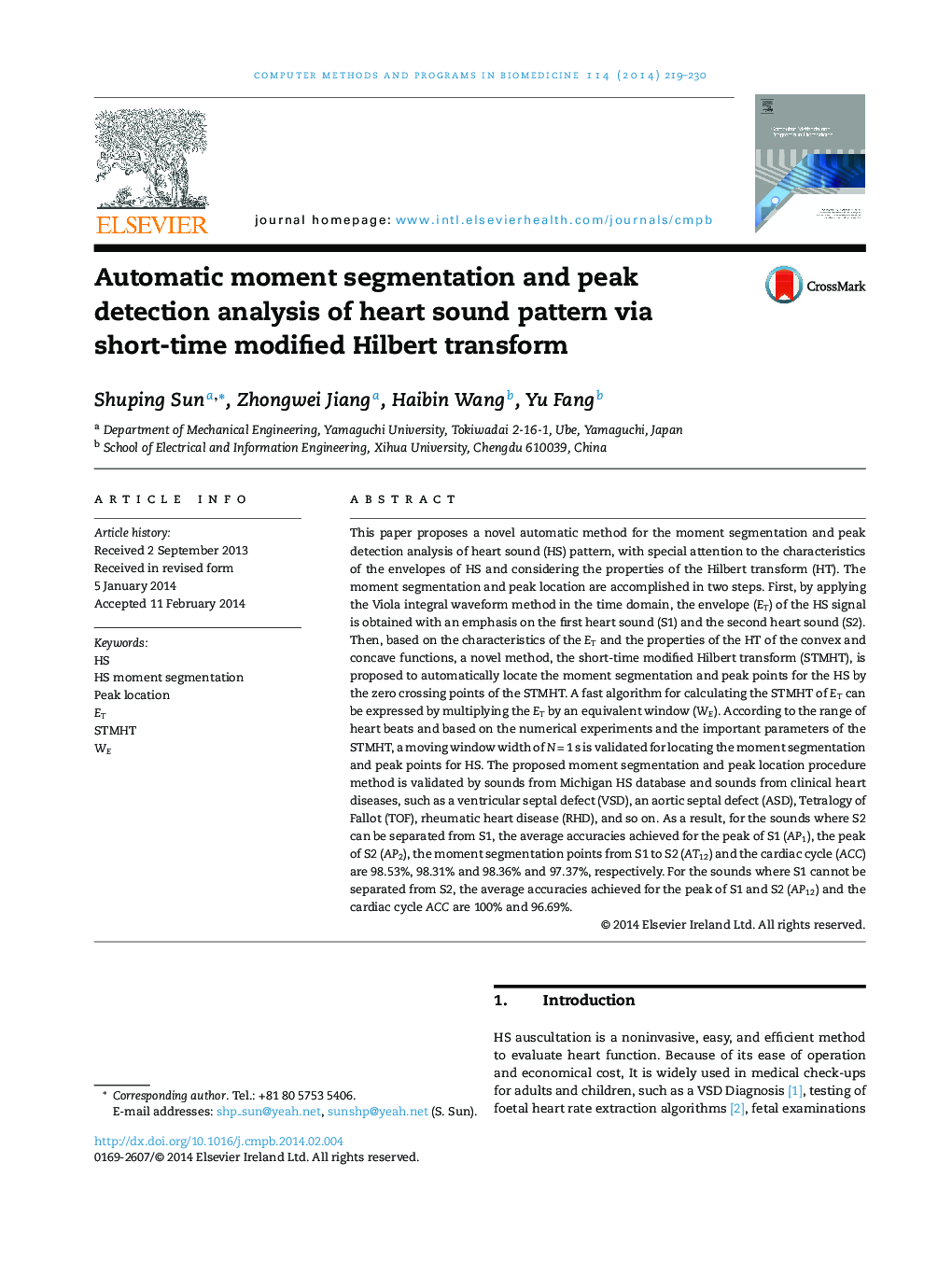| Article ID | Journal | Published Year | Pages | File Type |
|---|---|---|---|---|
| 10345517 | Computer Methods and Programs in Biomedicine | 2014 | 12 Pages |
Abstract
This paper proposes a novel automatic method for the moment segmentation and peak detection analysis of heart sound (HS) pattern, with special attention to the characteristics of the envelopes of HS and considering the properties of the Hilbert transform (HT). The moment segmentation and peak location are accomplished in two steps. First, by applying the Viola integral waveform method in the time domain, the envelope (ET) of the HS signal is obtained with an emphasis on the first heart sound (S1) and the second heart sound (S2). Then, based on the characteristics of the ET and the properties of the HT of the convex and concave functions, a novel method, the short-time modified Hilbert transform (STMHT), is proposed to automatically locate the moment segmentation and peak points for the HS by the zero crossing points of the STMHT. A fast algorithm for calculating the STMHT of ET can be expressed by multiplying the ET by an equivalent window (WE). According to the range of heart beats and based on the numerical experiments and the important parameters of the STMHT, a moving window width of NÂ =Â 1Â s is validated for locating the moment segmentation and peak points for HS. The proposed moment segmentation and peak location procedure method is validated by sounds from Michigan HS database and sounds from clinical heart diseases, such as a ventricular septal defect (VSD), an aortic septal defect (ASD), Tetralogy of Fallot (TOF), rheumatic heart disease (RHD), and so on. As a result, for the sounds where S2 can be separated from S1, the average accuracies achieved for the peak of S1 (AP1), the peak of S2 (AP2), the moment segmentation points from S1 to S2 (AT12) and the cardiac cycle (ACC) are 98.53%, 98.31% and 98.36% and 97.37%, respectively. For the sounds where S1 cannot be separated from S2, the average accuracies achieved for the peak of S1 and S2 (AP12) and the cardiac cycle ACC are 100% and 96.69%.
Related Topics
Physical Sciences and Engineering
Computer Science
Computer Science (General)
Authors
Shuping Sun, Zhongwei Jiang, Haibin Wang, Yu Fang,
